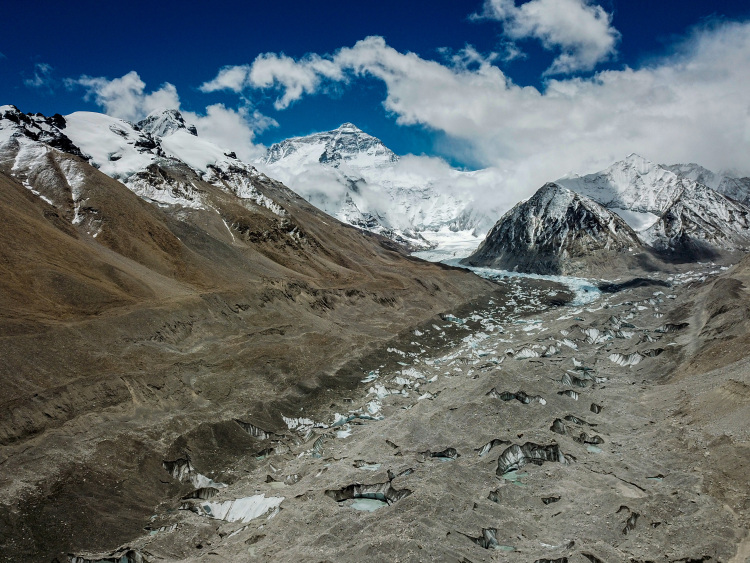
by Xinhua writers Hu Tao, Zhang Wenjing
The discovery of microplastics on the Qinghai-Tibet Plateau has not only resulted in some unexpected revelations but also shed light on the global transmission of pollutants.
A new study that analyzed these tiny particles in the Qinghai-Tibet Plateau and other key regions has found that microplastics are posing a threat to typical remote cryospheric regions, according to the Northwest Institute of Eco-Environment and Resources (NIEER), Chinese Academy of Sciences.
"A copious amount of microplastics was found on glaciers in the Qinghai-Tibet Plateau, indicating that microplastics can be transported over long distances from the surrounding areas with heavy anthropogenic emissions of pollutants," said Zhang Yulan, a researcher with the NIEER and corresponding author of the study.
"Microplastics recorded ice cores from glaciers in the Qinghai-Tibet Plateau can be used to reconstruct the historical variations of anthropogenic activities, and might be a new research topic in the future," Zhang added.
Microplastics have become one of the most pressing global environmental issues. The new study helps enhance the understanding of the features and transport of microplastics in the cryospheric regions. It also helps to estimate the potential impacts of microplastics on the environment.
Microplastics usually refer to plastic fibers, films, fragments, and microbes, less than 5 mm in size. They are widely distributed in water, soil, sediment, atmosphere, and even snow and ice, and have potential impacts on Earth's climate and environment.
Typical cryospheric regions, such as the Arctic, Antarctic and the Qinghai-Tibet Plateau, are usually far away from the intensive anthropogenic activities.
"The Qinghai-Tibet Plateau and other major typical cryospheric regions are considered the ideal laboratory to investigate the source, transmission and impact of pollutants," Zhang said.
The researchers from the NIEER conducted a series of studies on the features and their potential impacts of microplastics in the typical cryospheric regions. They carried out the study jointly with researchers from institutions at home and abroad.
The findings have been published in the journals Earth-Science Reviews, Science of The Total Environment and Environmental Pollution.
The researchers found that microplastics are widely distributed in snow and ice, river water and surface soil in the remote cryospheric regions, with a significant impact of atmospheric long-range transport of microplastics.
They also found that microplastic concentrations in snow and ice differed one to four orders of magnitudes mostly due to the different sampling and measurement methods.
"A systematic sampling and measurement methods would help to establish the microplastics dataset in snow, ice, soil and other environment matrices. It is also of importance to promote the comprehensive investigations of microplastic pollution globally," Zhang said. (Xinhua)

